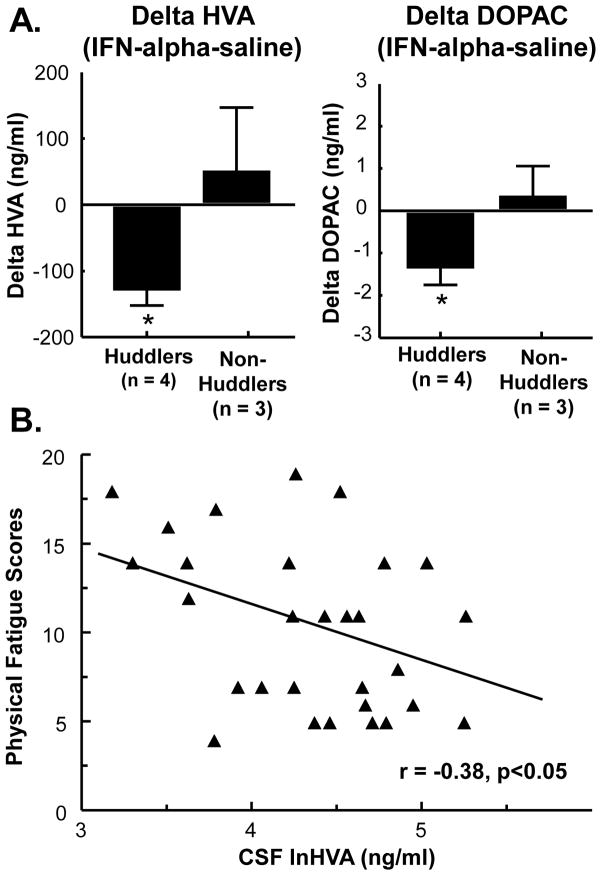Fig. 1. Reduced CSF HVA concentrations during chronic IFN-alpha administration are associated with depressive-like huddling behavior in monkeys and symptoms of fatigue in humans.
Video-taped behavior and cisternal cerebrospinal (CSF) samples were collected from 7 rhesus monkeys receiving daily subcutaneous (s.c.) injections of saline or IFN-alpha (20 IU/m2 body surface area) for 2 weeks, and were analyzed for depressive-like huddling behavior and monoamine metabolite concentrations, respectively. Compared to saline, IFN-alpha produced increased huddling behavior in 4 out of 7 animals that was associated with decreased CSF homovanillic acid (HVA) and 3,4-dihydroxyphenylacetic acid (DOPAC) concentrations (A). In HCV+ human subjects treated with IFN-alpha for 11 weeks, natural log (ln) transformed concentrations of CSF HVA were correlated with fatigue scores, as measured by the physical fatigue dimension of the multidimensional fatigue inventory (MFI) (r=−0.38, p<0.05, n=29) (B). Data in A are summarized as mean+/−SE, *p<0.05

